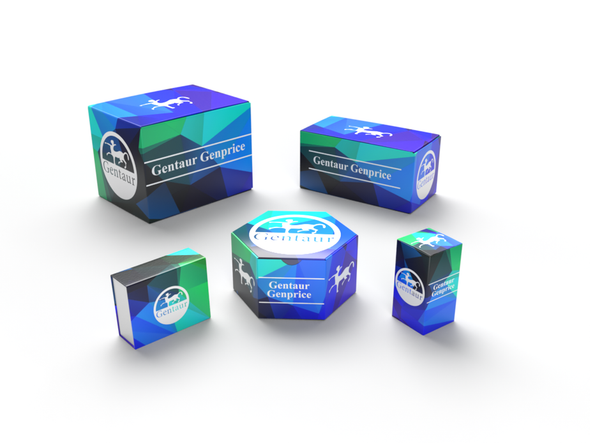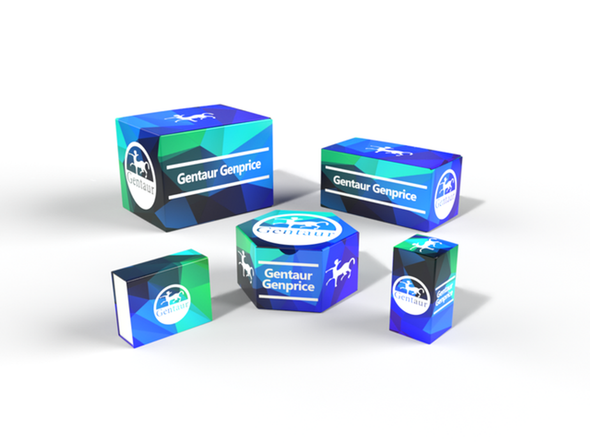LDB
AKR1C3 Antibody (N-term) [APR10809G]
- SKU:
- LBD-APR10809G-GEN
- Availability:
- Usually ships in 5 working days
Description
AKR1C3 Antibody (N-term) [APR10809G] | Gentaur UK, US & Europe Distribution
Product Category: Polyclonal Antibodies
Host: Rabbit
Species Reactivity: H
Specificity: This AKR1C3 antibody is generated from rabbits immunized with a KLH conjugated synthetic peptide between 10-36 amino acids from the N-terminal region of human AKR1C3.
Cellular Localisation: Cytoplasm.
Molecular Weight: 36853
Clone: Polyclonal
Gene Name: AKR1C3
Gene ID: 8644
Function: Cytosolic aldo-keto reductase that catalyzes the NADH and NADPH-dependent reduction of ketosteroids to hydroxysteroids. Acts as a NAD (P) (H) -dependent 3-, 17- and 20-ketosteroid reductase on the steroid nucleus and side chain and regulates the metabolism of androgens, estrogens and progesterone (PubMed:10622721, PubMed:11165022, PubMed:7650035, PubMed:9415401, PubMed:9927279) . Displays the ability to catalyze both oxidation and reduction in vitro, but most probably acts as a reductase in vivo since the oxidase activity measured in vitro is inhibited by physiological concentration of NADPH (PubMed:14672942, PubMed:11165022) . Acts preferentially as a 17- ketosteroid reductase and has the highest catalytic efficiency of the AKR1C enzyme for the reduction of delta4-androstenedione to form testosterone (PubMed:20036328) . Reduces prostaglandin (PG) D2 to 11beta-prostaglandin F2, progesterone to 20alpha-hydroxyprogesterone and estrone to 17beta-estradiol (PubMed:15047184, PubMed:20036328, PubMed:10622721, PubMed:11165022, PubMed:10998348, PubMed:19010934) . Catalyzes the transformation of the potent androgen dihydrotestosterone (DHT) into the less active form, 5-alpha-androstan-3-alpha, 17-beta-diol (3-alpha-diol) (PubMed:10998348, PubMed:14672942, PubMed:11165022, PubMed:7650035, PubMed:9415401, PubMed:10557352) . Displays also retinaldehyde reductase activity toward 9-cis-retinal (PubMed:21851338) .
Summary: Tissue Location: Expressed in many tissues including adrenal gland, brain, kidney, liver, lung, mammary gland, placenta, small intestine, colon, spleen, prostate and testis. High expression in prostate and mammary gland. In the prostate, higher levels in epithelial cells than in stromal cells. In the brain, expressed in medulla, spinal cord, frontotemporal lobes, thalamus, subthalamic nuclei and amygdala. Weaker expression in the hippocampus, substantia nigra and caudate
Form: Purified polyclonal antibody supplied in PBS with 0.09% (W/V) sodium azide. This antibody is purified through a protein A column, followed by peptide affinity purification.
Storage: Maintain refrigerated at 2-8°C for up to 2 weeks. For long term storage store at -20°C in small aliquots to prevent freeze-thaw cycles.
Application: WB, FC
Dilution: WB--1:1000 FC--1:10~50
Synonyms: Aldo-keto reductase family 1 member C3, 1---, 17-beta-hydroxysteroid dehydrogenase type 5, 17-beta-HSD 5, 3-alpha-HSD type II, brain, 3-alpha-hydroxysteroid dehydrogenase type 2, 3-alpha-HSD type 2, Chlordecone reductase homolog HAKRb, Dihydrodiol dehydrogenase 3, DD-3, DD3, Dihydrodiol dehydrogenase type I, HA1753, Indanol dehydrogenase, Prostaglandin F synthase, PGFS, Testosterone 17-beta-dehydrogenase 5, Trans-1, 2-dihydrobenzene-1, 2-diol dehydrogenase, AKR1C3, DDH1, HSD17B5, KIAA0119, PGFS

![AKR1C3 Antibody (N-term) [APR10809G] AKR1C3 Antibody (N-term) [APR10809G]](https://cdn11.bigcommerce.com/s-1rdwiq712m/images/stencil/608x608/products/54704/463876/gentaur-genprice__26005.1661610467__29809.1661628092__75433.1661676199__77988.1661684280__64362.1661692443__02085.1662049603__45075.1662119302__91744.1662191540__21580.1662291419__18643.1663322660.png?c=1)




![AKR1C3 Antibody (Center) [APG01663G] AKR1C3 Antibody (Center) [APG01663G]](https://cdn11.bigcommerce.com/s-1rdwiq712m/images/stencil/590x590/products/55087/55391/gentaur-genprice__26005.1661610467__29809.1661628092__75433.1661676199__77988.1661684280__64362.1661692443__84988.1661835818.png?c=1)